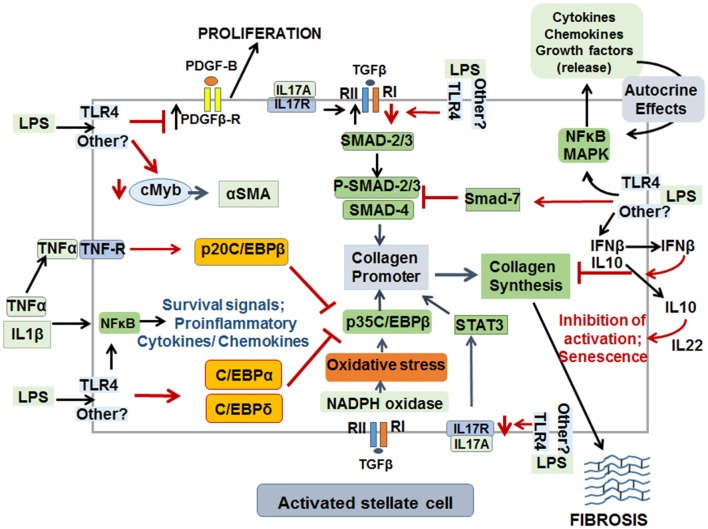Figure 5.
Schematic representation of pro- and anti-fibrogenic effects of LPS on activated HSCs. Although LPS may act through TLR4 on aHSCs, it can also exert effects in a non-TLR4 pathway that has not been identified yet. LPS by stimulating synthesis of several cytokines and chemokines, via stimulation of NFkB and MAPK pathways, promotes survival (TNFα and IL1β) in an autocrine manner. The mediators released thus can also stimulate ECM synthesis, migration and proliferation of aHSCs. LPS down-regulates cMyb transcription factor and thus reduces the expression of α-SMA, a major marker of aHSCs. By down-regulating PDGFβR, LPS mitigates proliferation of aHSCs. LPS inhibits TGFβ-induced ECM synthesis by down-regulating TGFβR1, by increasing expression of SMAD7, C/EBPα, C/EBPδ, and p20C/EBPβ. IL17 can act directly on HSCs to stimulate ECM synthesis and by up-regulating TGFβRII. However, by down-regulating the expression of IL17R, LPS can reduce IL17-induced ECM synthesis by aHSCs. Finally, increased production of IL10 and IFNβ by LPS-stimulated aHSCs can be a mechanism of inhibition of ECM synthesis, activation and promotion of senescence.

